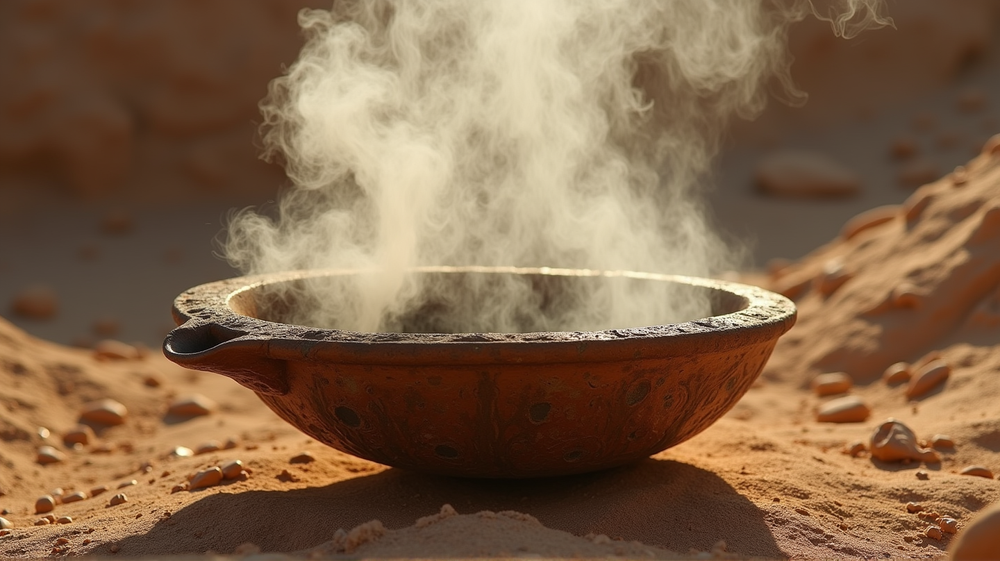Uncovering the Roots of Ancient Arabian Smoke Rituals with a Psychoactive Twist
In a breakthrough that bridges the ancient and the modern, scientists have discovered evidence of Arabian smoke rituals using the psychoactive plant Peganum harmala, dating back 2,700 years. This discovery not only illuminates the sensory and therapeutic practices of ancient Arabia but also enriches our understanding of historical pharmacopeia.
Decoding the Smoke of the Past
Recent research published in Communications Biology has shed light on the earliest known use of Peganum harmala—also known as Syrian rue—in fumigation processes in Arabia. Locally sourced and burned for its bioactive properties, this plant played a crucial role in Iron Age health and ritual practices, offering insights into the daily life and cultural beliefs of the time.
The Oasis of Discovery: Qurayyah
The oasis settlement of Qurayyah in northwestern Saudi Arabia, known for its exquisitely decorated ceramic vessels, became the focal point of this groundbreaking study. Led by Dr. Barbara Huber of the Max Planck Institute of Geoanthropology and Prof. Marta Luciani of the University of Vienna, the research team performed meticulous chemical analysis on Iron Age fumigation devices found in the region.
A Technological Leap in Archaeobotany
This study employed state-of-the-art metabolic profiling techniques, including high-performance liquid chromatography-tandem mass spectrometry (HPLC-MS/MS), to detect the characteristic harmala alkaloids in the preserved organic residues. According to Technology Networks, the integration of these advanced biomolecular methods allowed for an unprecedented look into ancient plant use, providing tangible evidence of the plant’s role and purpose in historical smoke rituals.
Peganum harmala: A Plant of Many Talents
Known for its antibacterial, psychoactive, and therapeutic properties, Peganum harmala has long been a staple in traditional medicine and household fumigation throughout the Middle East. This research not only highlights its long-standing cultural significance but also underscores the sophisticated knowledge ancient societies possessed in utilizing natural resources for health and purification.
Bridging Historical and Modern Understandings
The implications of this study are profound, spanning beyond the realms of archaeology into fields such as ethnobotany, medical anthropology, and pharmacognosy. It paints a vivid picture of the interplay between humans and plants in the Arab world, and the enduring legacy of ancient pharmacopeia. As Prof. Marta Luciani eloquently put it, “We’re gaining access to plant-based practices that were central to daily life but are rarely preserved in the archaeological record.”
This discovery not only enriches our cultural heritage but also serves as a testament to the intricate relationship between people and their natural environment—a relationship that continues to evolve and inspire even today.




